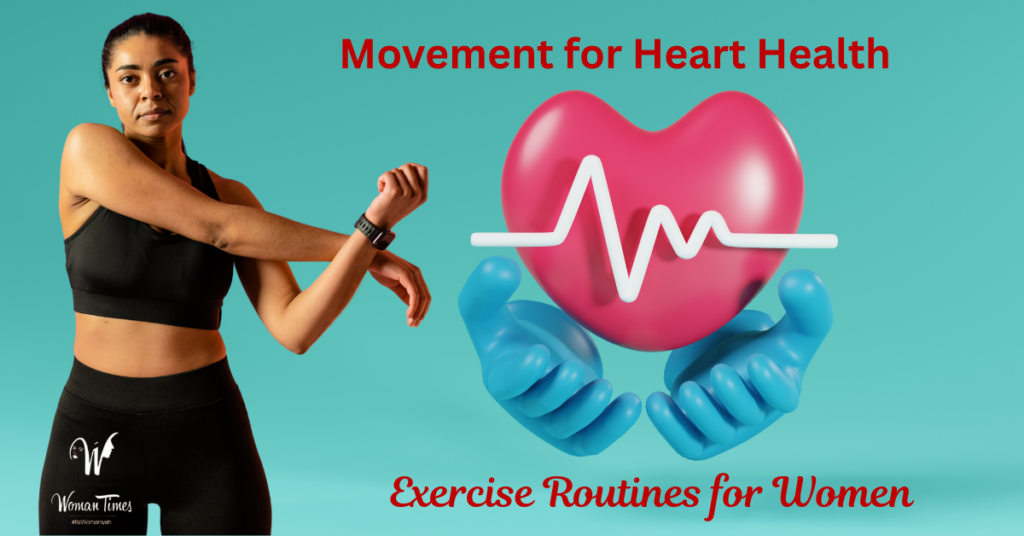Heart health is the foundation of overall well-being, and for women, it’s especially important to make heart health a lifelong priority. Heart disease remains one of the leading causes of death among women worldwide, yet much of the risk can be reduced through lifestyle choices and regular movement is one of the most powerful tools available.
Exercise does far more than simply burn calories. It strengthens the heart muscle, improves circulation, lowers blood pressure, regulates cholesterol, reduces stress, and boosts energy levels. Irrespective of your age, background, or fitness level, the right exercise routine can help you build a stronger heart and enjoy a healthier, more vibrant life.
Why Movement Matters for Heart Health
The heart is a muscle — and like any muscle, it needs regular use to stay strong. Exercise forces your heart to work a little harder, increasing the flow of blood and oxygen throughout your body. Over time, this makes it more efficient at pumping blood and reduces the strain on your cardiovascular system.
For women, movement is particularly beneficial because it also:
Improves cholesterol balance by raising HDL (good cholesterol) and lowering LDL (bad cholesterol).
Manages weight to reduce the risk of high blood pressure, diabetes, and heart strain.
Enhances stress resilience by releasing endorphins, which help counteract anxiety and depression.
Supports bone and joint health, especially important as women age and estrogen levels decline.
Even small amounts of regular physical activity can significantly improve heart health over time; the key is consistency.
The American Heart Association recommends at least 150 minutes of moderate activity or 75 minutes of vigorous exercise weekly, along with strength training twice a week. This can be broken into short, manageable sessions to fit any schedule.
Beginner Routine (20–30 minutes, 3–4x/week)
Warm-up: 5 minutes of light walking or marching while stationery
Cardio: 10–15 minutes brisk walking or easy cycling
Strength: Wall push-ups, bodyweight squats, calf raises (2 sets each)
Cool-down: Gentle stretching for major muscle groups
Use a fitness tracker or heart rate monitor to ensure you’re exercising in your target heart rate zone.Target Heart rate is 50-60% of (220 – Age)
Intermediate Routine (30–40 minutes, 4–5x/week)
Warm-up: Dynamic stretches and side steps
Cardio: 20 minutes of interval training — alternate brisk walking/jogging with moderate recovery
Strength & Core: Lunges, modified push-ups, planks (2–3 sets)
Cool-down: Walking and targeted stretches
Use a fitness tracker or heart rate monitor to ensure you’re exercising in your target heart rate zone.Target Heart rate is 60-70% of (220 – Age)
Also Read: The Silent Heart-Stealer: How Stress Robs Women of Their Heart Health
Advanced Routine (45–60 minutes, 5x/week)
Warm-up: Jogging, jump rope, or dance moves
Cardio: Running, swimming, or cycling with high-intensity bursts
Strength & Stability: Weighted squats, chest presses, side planks, balance exercises
Cool-down: Stretching and deep breathing
Use a fitness tracker or heart rate monitor to ensure you’re exercising in your target heart rate zone.Target Heart rate is 70-85% of (220 – Age)
Everyday Movement Tips
Not all heart-boosting activity has to be formal exercise. Take the stairs, park farther from your destination or walk during phone calls.Join a walking group for social motivation.
These small choices add up and keep your heart active throughout the day.
Staying Motivated for the Long Term
Consistency is key for heart health, but motivation can fade over time. These strategies help keep your exercise routine fresh and enjoyable:
Choose activities you love – hiking, swimming, dance, yoga – so workouts feel less like chores.
Track your progress -seeing improvements in endurance, strength, or energy can be motivating.
Pair workouts with music or podcasts – this can make the time fly by.
Celebrate small wins – every completed workout is an investment in your health.
Find a workout buddy – accountability makes it harder to skip sessions.
Listen to Your Body
While pushing yourself is important, so is rest and recovery. Signs you may need to ease up include persistent fatigue, dizziness, chest pain, or shortness of breath. Always consult a healthcare professional before starting a new exercise program, especially if you have existing health conditions.
Conclusion
Movement, truly is medicine for the heart. Whether you’re starting with short daily walks or challenging yourself with high-intensity training, every step, stretch, and beat counts. By weaving in enjoyable and sustainable exercise into your routine, you’re not just strengthening your body; you’re protecting your future, one step at a time. For women, building a heart-healthy exercise routine isn’t just about fitness; it’s about long-term vitality, energy, and independence.



